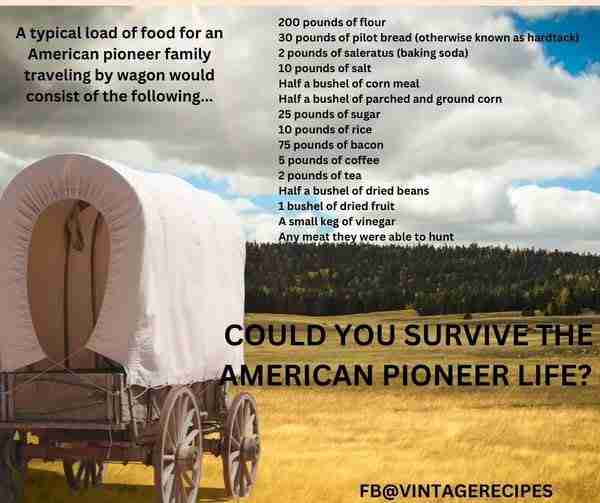
Could you survive on a pioneer diet?
Food was the most important supply needed by those traveling by wagon across the United States during the pioneer times. Families would travel many miles alone in the wilderness without the ability to restock, so starting out with enough supplies and conserving those supplies was of the upmost importance.
For example, going west, a Conestoga wagon or a converted farm wagon made into a prairie schooner was mostly filled with food, as well as other necessities. While some families started out with furniture and other nonessential goods in their wagons, that was soon left by the wayside, lightening the load, so they could keep their all-important food.
A wagon train would travel about two miles an hour! That meant an average of only about ten miles a day! It could take up to 6 - 8 months to travel 2000 miles, barring weather and other conditions that could slow the progress.
So you can begin to see how important food supply was.
A typical load of food would consist of the following for each adult in the family. Similar provisions for children would be brought along, with the quantities adjusted for their size.
One of the easiest ways for pioneers to restock or stretch their food supplies was to hunt. Hunting provided them with fresh meat, something they had no chance of bringing with them as there was no form of refrigeration. Common game was buffalo, bear, cougar, rabbit and squirrel.
They couldn’t afford to let anything go to waste. So, it wasn’t unusual for pioneers to eat parts of the animal which we would turn our noses up at. Brain, heart, tongue, liver and even intestines were eaten, often cut up and put in a stew.
#pioneerfood #americanpioneer #wagontrain #pioneercookin #vintagerecipes